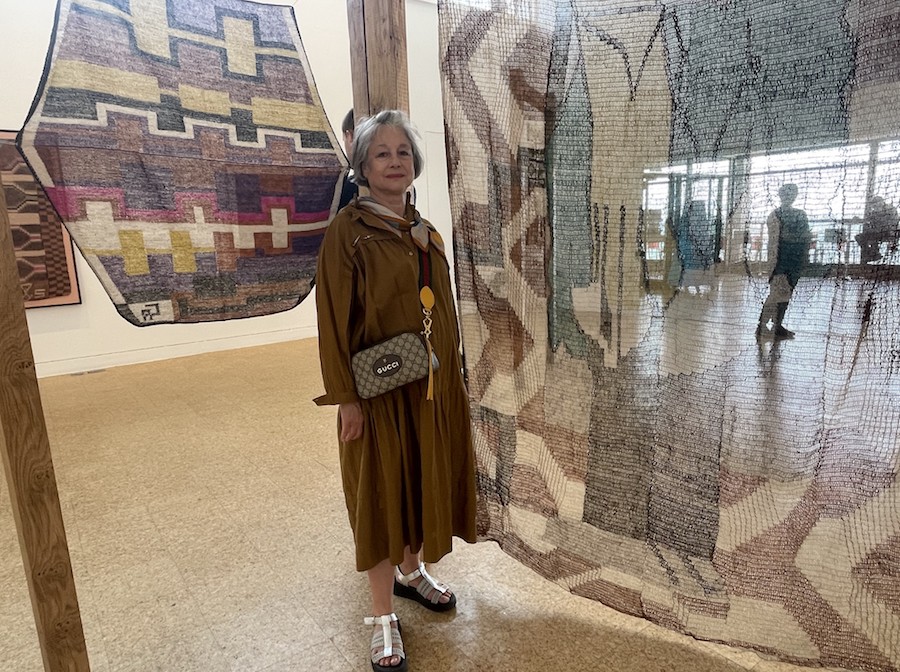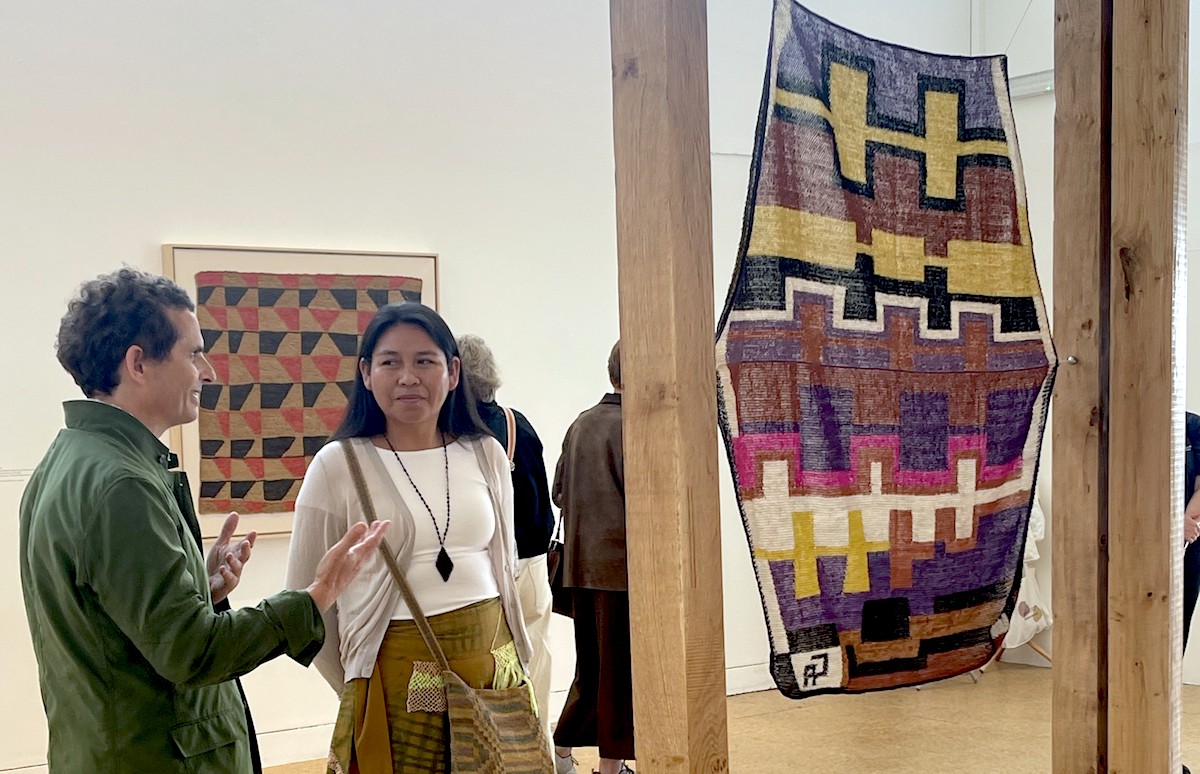Textile art, often regarded as a peripheral craft, is currently riding a wave of critical appreciation. After ‘Unravel’ at the Barbican and Tadek Beutlich at the Ditchling Museum of Art & Craft, the De La Warr Pavilion in Bexhill is the latest to catch the wave. The summer exhibition, “Tayhin,” showcases works by Claudia Alarcón and Silat, a collective of women weavers from Wichi indigenous communities in northern Argentina.
Tayhin, which means weaving, building, and healing in the Wichi language, brings together a couple of dozen hanging pieces hand-loomed from hand-spun fibres of chaguar, a thorny, rough-leaved agave species native to the Wichi ancestral lands. Often monumental in size, each piece may involve as many as seven women working together; however, the show also includes some weavings created and produced by Alarcón alone.
Unframed, some hang from large wooden structures in the centre of the space, while others are displayed on the walls. Dyed in earthy tints using natural pigments from bark, roots, leaves or seeds, with occasional brighter splashes of artificial colour, the cloths are woven in delicate geometric patterns of rectangles and stars. They recall the modernist abstractions of Anni Albers and Sophie Taeuber-Arp. Albers owned chaguar weavings as part of her engagement with pre-Hispanic textiles and featured them in her seminal 1965 text On Weaving.

Alarcón established a collective of more than 100 women of all ages with her mentor, the curator and cultural activist Andrei Fernandez, in 2023 to revive ancestral textile traditions. Silat means ‘information’ or ‘alert’ in the Wichi language, and a key aim of the collective is to transmit ancient skills and knowledge from one generation to the next.
“Weaving is a form of nonverbal communication. In Wichi communities, it’s a female-led communal practice and an ancestral means of storytelling,” says Alarcón, who is herself a member of the La Puntana Wichi community in the Salta region of Northern Argentina.
“The geometric shapes we make in the fabric have meanings; each one is a message. Some shapes reference birds, footprints, cat’s eyes, and our landscape. In the images, we recall our ancestors and see that they are all part of us. They all have a meaning — it is an inner language expressed between the women and their ancestors.”
It is also a language of resistance. Following a change in the land laws of the Salta region in the 1980s, Wichi hunting and gathering grounds were increasingly invaded by ranchers, farmers, and loggers. The result was a marginalisation of the indigenous communities, which are now among the poorest in the country. Chaguar weaving, developed in response as a subsistence income stream for women to sell goods at local markets, has been taken by Silat to another level.
“The important thing is that everyone knows that we are here, part of this land, alive and resisting. We are always in solidarity, seeking respect and value for us and our work, for who we are and what we want to be, in honour of our ancestors. We will continue fighting,” Alarcón says.
And increasingly, everyone does know that they are here. In the two years since its foundation, the company’s rise has been spectacular. Chosen for inclusion in last year’s Venice Biennial, their work was greeted with international critical acclaim. In the aftermath of Venice, Alarcón & Silät will feature in a Guggenheim Bilbao show, Arts of the Earth opening 5 December. While Tayhin is their first institutional solo presentation, showing new weavings created for the exhibition.
Simultaneously, the London gallery Cecilia Brunson Projects has a parallel show of their work – its second; Brunson was involved in the collective very early on. ‘Choreography of the Imagination’ was picked out by leading critics as one of the best offerings during this year’s London Gallery Weekend.
Words/Photos: Claudia Barbieri Childs
Tayhin, De La Warr Pavilion, Bexhill-on-Sea, (Top Photo) until September 14
‘Choreography of the Imagination’, Cecilia Brunson Projects, Royal Oak Yard, Bermondsey, London SE1, until July 25

